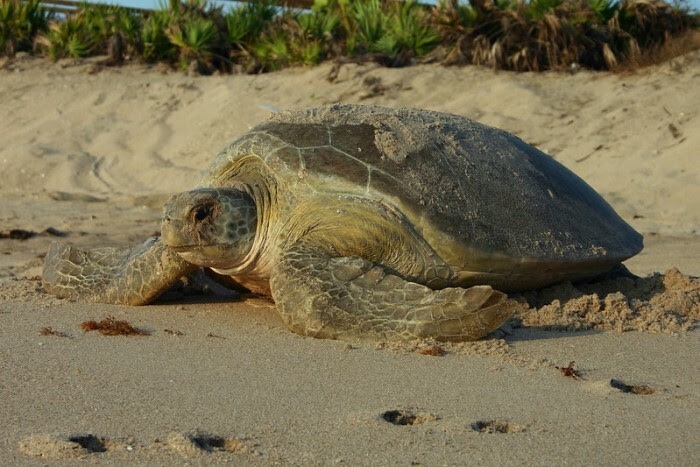Sea turtle nesting season arrives along Florida’s coasts
Florida Fish and Wildlife Conservation Commission (FWC)
The Florida Fish and Wildlife Conservation Commission (FWC) is sharing the reminder that sea turtles are beginning to nest on Florida's beaches. Residents and visitors can play a big part in helping to protect vulnerable nesting sea turtles this spring and summer while visiting Florida’s coastal habitats.
Because the state’s shorelines provide important nesting habitat for several species of threatened and endangered sea turtles, beachgoers can have a significant impact on their nesting success. To help nesting sea turtles, people can take easy steps to protect them, including giving them space, minimizing disturbances, and keeping beaches clean and dark at night.
Clear the way at the end of the day:
Female sea turtles expend large amounts of energy crawling out of the surf and far enough up the sand in order to dig and lay nests in spots that are less vulnerable to the tides. Obstacles on the beach can entrap and prevent them from nesting as they crawl across the sand to lay their eggs. Trash, holes in the sand and other obstacles can also prevent sea turtle hatchlings from reaching the water once they emerge from their nests. Food scraps attract predators, such as raccoons and crows, that prey on sea turtle hatchlings. Litter on beaches can entangle sea turtles, birds and other wildlife. What can you do to help? Properly stash or recycle all trash, fill in human-made holes in the sand, and remove all beach toys, gear and furniture from the sand before sunset. Fishing line can be deadly to sea turtles, waterbirds and other wildlife, so be sure to dispose of it properly. To find a monofilament recycling station near you, visit mrrp.myfwc.com.
Lights out:
Any lighting can misdirect and disturb nesting sea turtles and their hatchlings, leading them away from the ocean and toward potential danger. To prevent this, beachgoers should use natural starlight to see when on the beach at night and avoid using flashlights or cellphones. Anyone living along or visiting Florida beaches can do their part by putting porch, parking or deck lights out and closing curtains after dark to avoid disorienting nesting and hatchling sea turtles on the beach. If lighting could still be visible from the beach, be sure it is long, low and shielded.
Admire from afar:
While it can be exciting to witness sea turtles on the beach, getting too close (50 feet or less) to nesting sea turtles can cause them to leave the beach before they complete the nesting process. If an animal changes their behavior, you’re likely too close. Remember – it is illegal to harm or disturb nesting sea turtles, their nests and eggs, or to pick up hatchlings.
Sea turtles typically return to nest in March along Florida’s southeast Atlantic coast from Brevard County south to Broward County, while nesting begins on Gulf Coast or north Florida beaches in April or May.
For more information about nesting sea turtles and how you can help, visit MyFWC.com/SeaTurtle or see the FWC’s “Be a Beach Hero” brochure at MyFWC.com/media/5875/be-a-beach-hero-brochure.pdf. You can also help sea turtles by reporting those that are sick, injured, entangled or dead to the FWC’s Wildlife Alert Hotline at 888-404-FWCC (3922).
